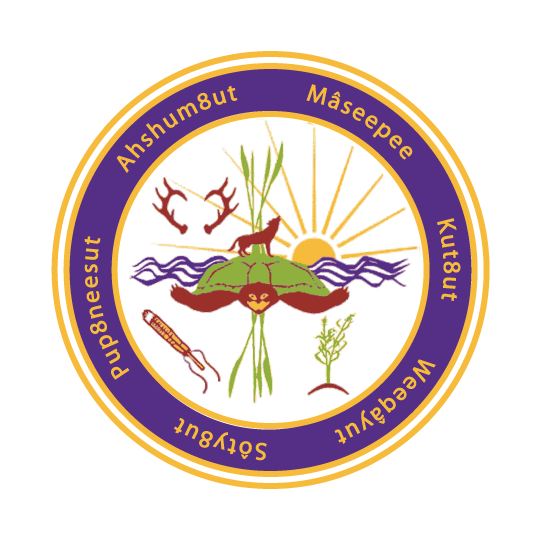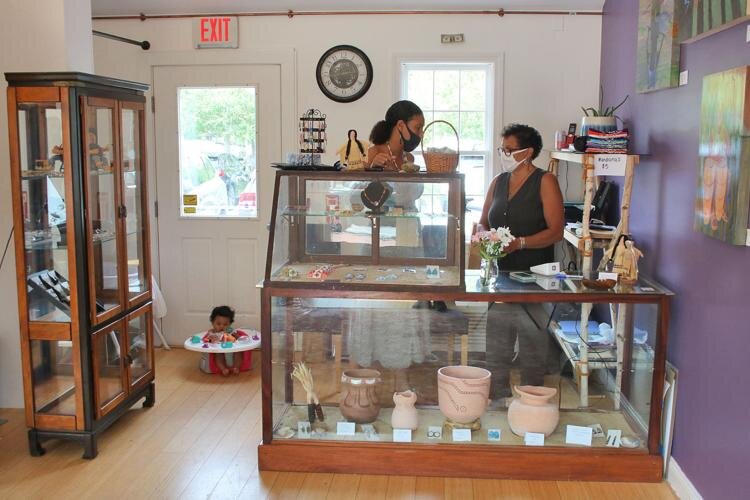
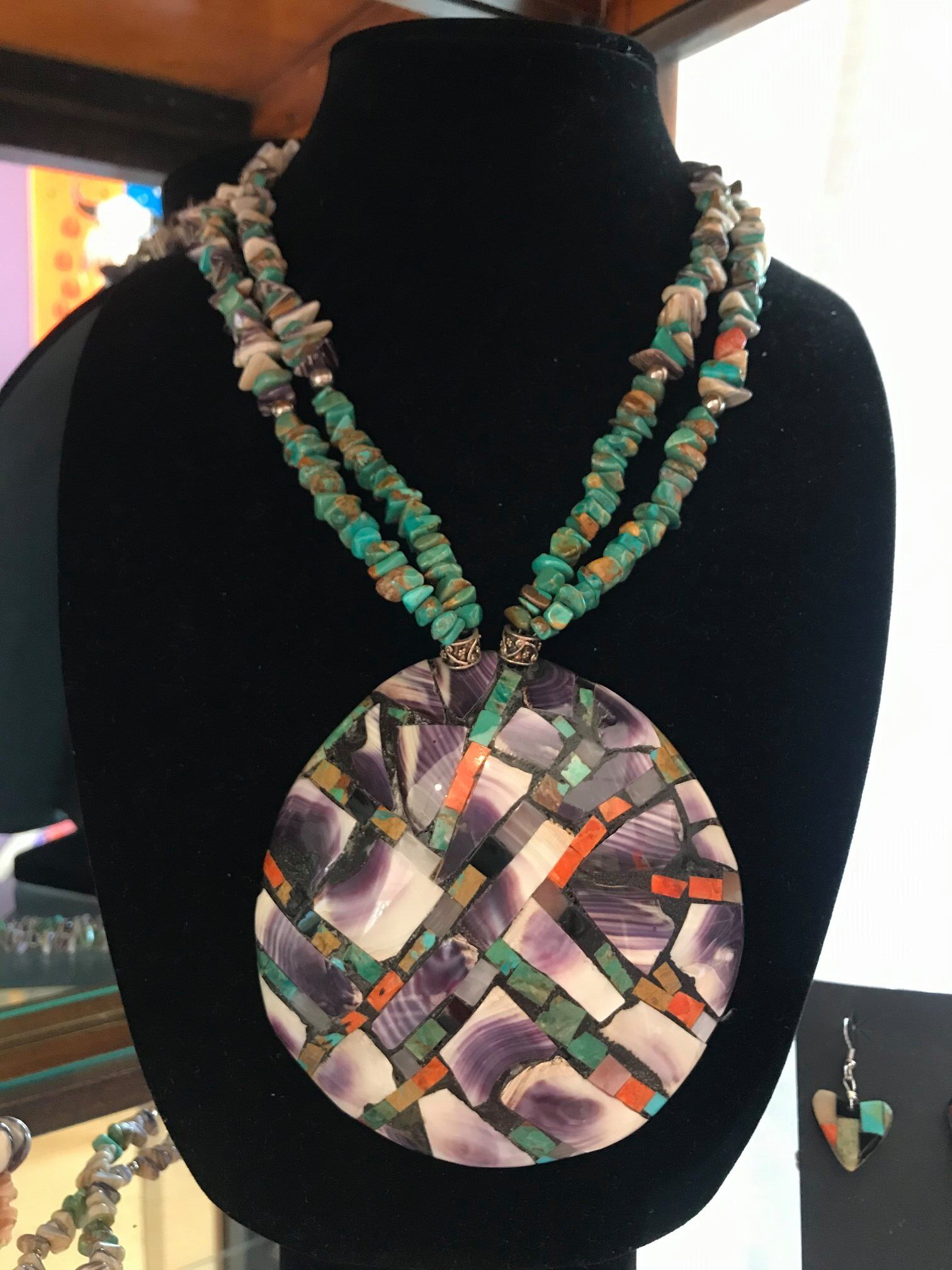
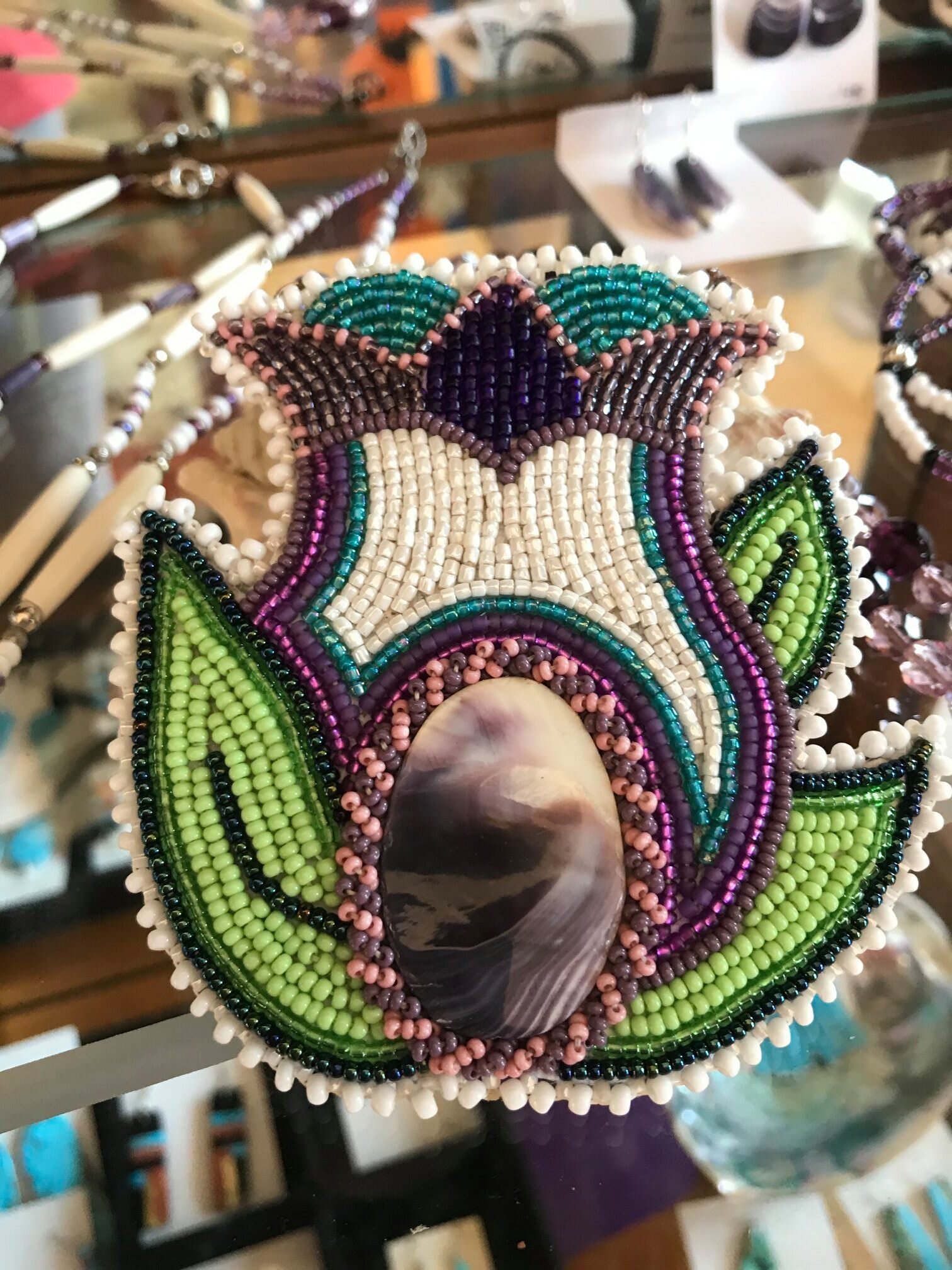
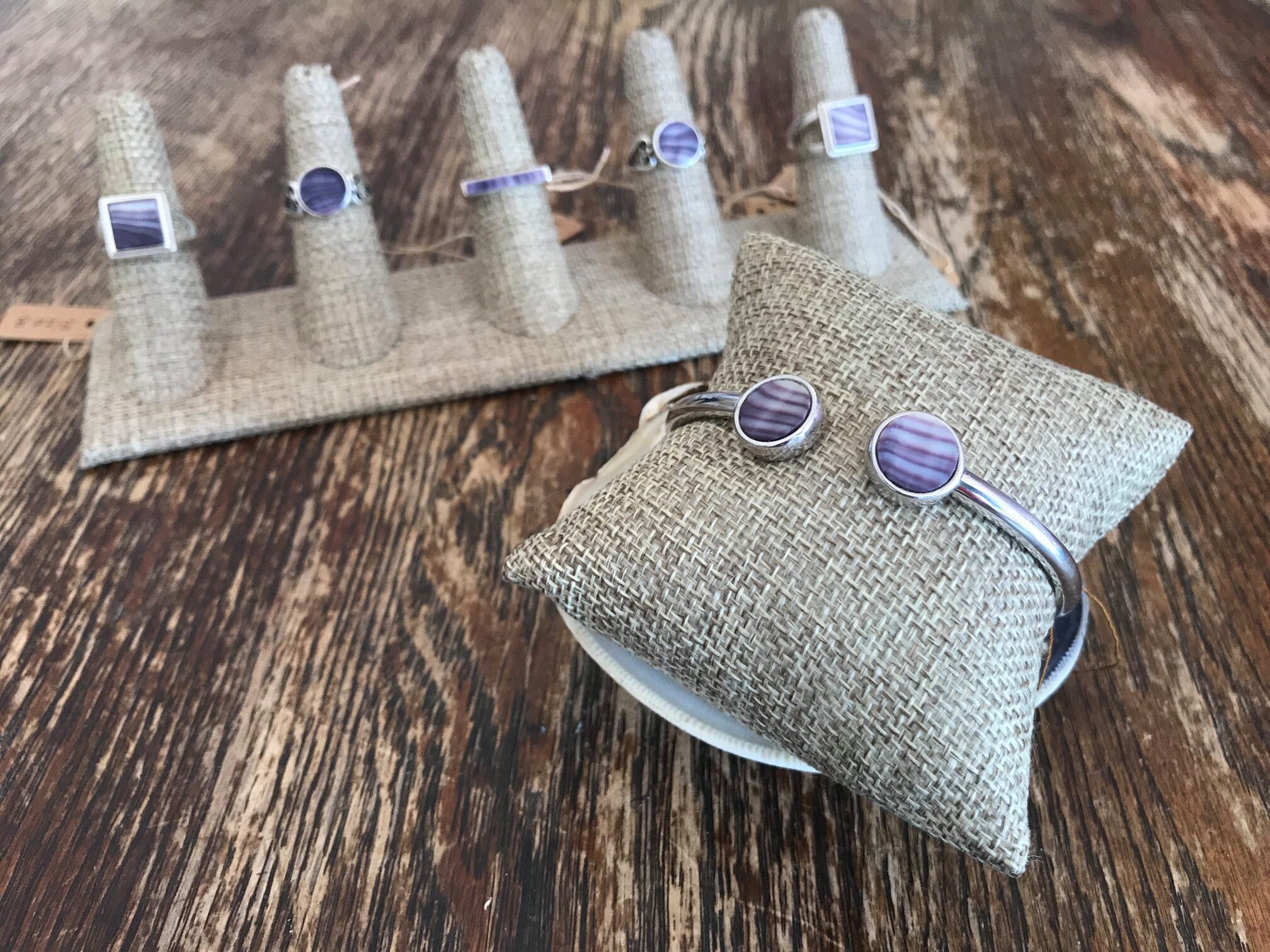
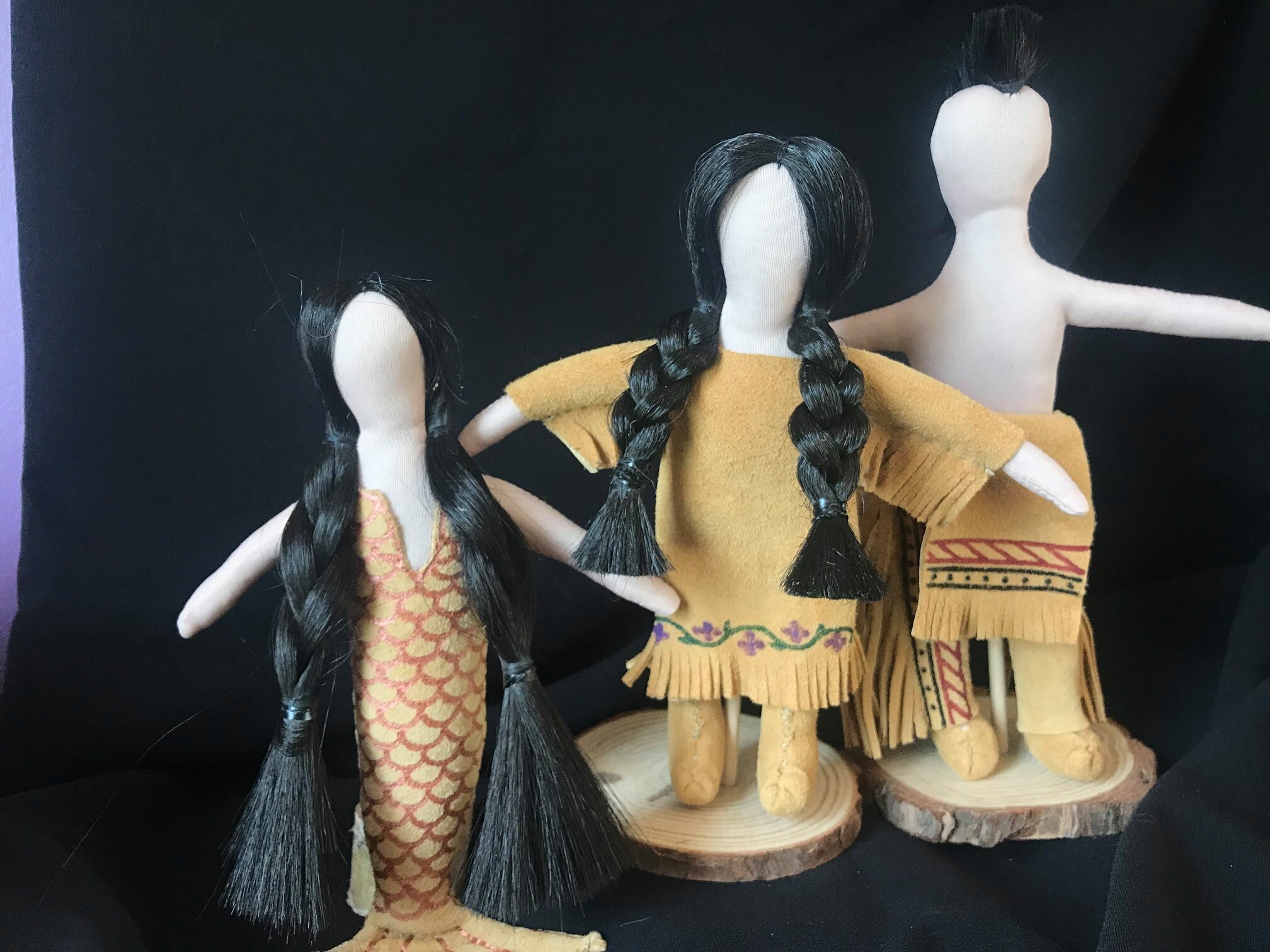
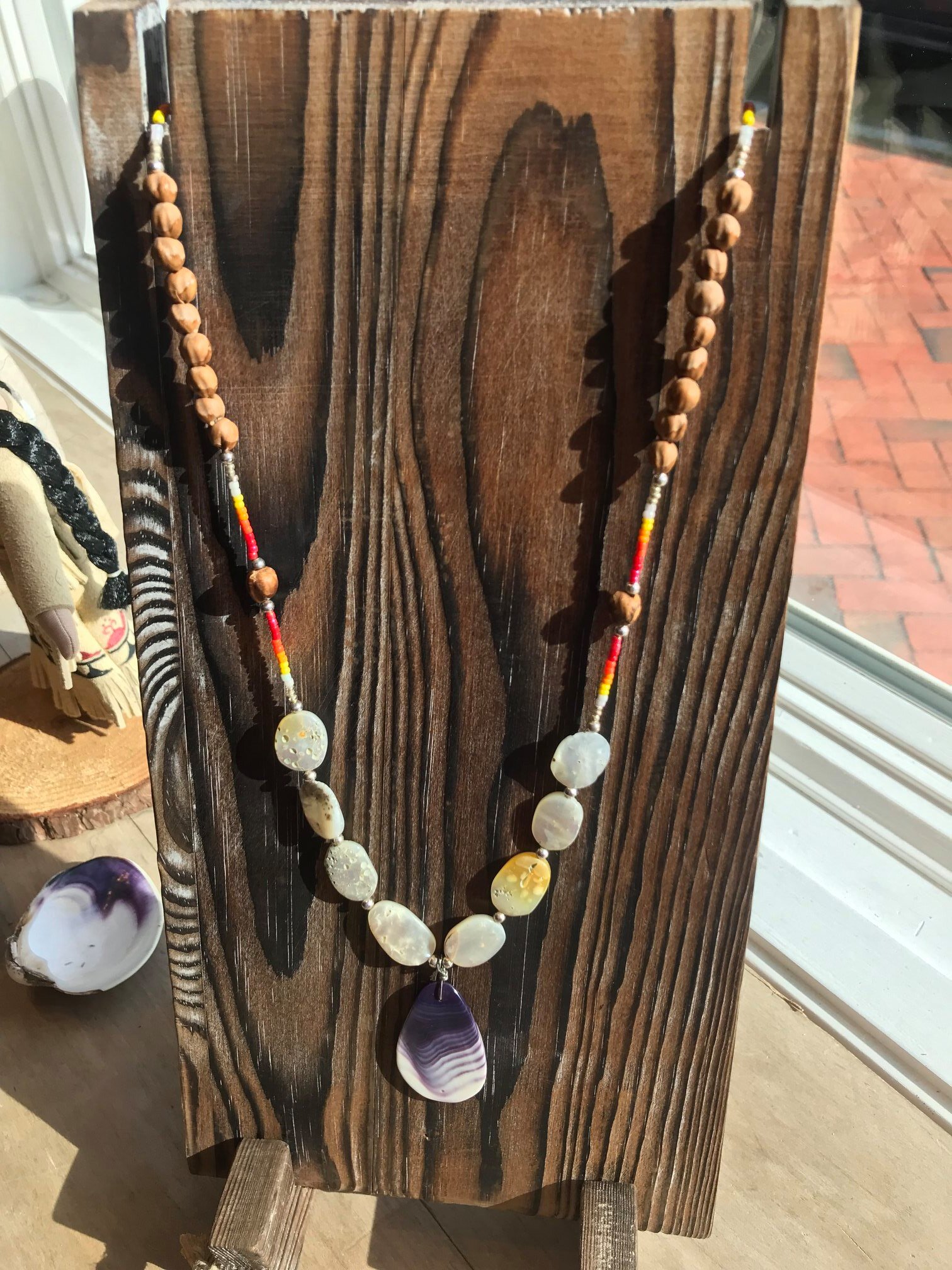
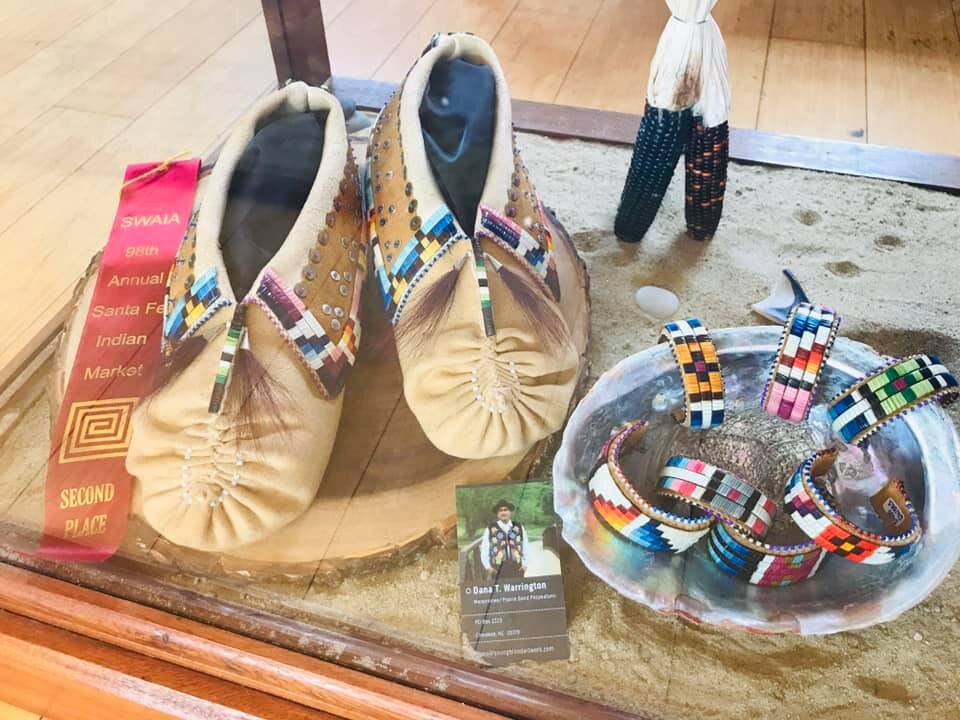
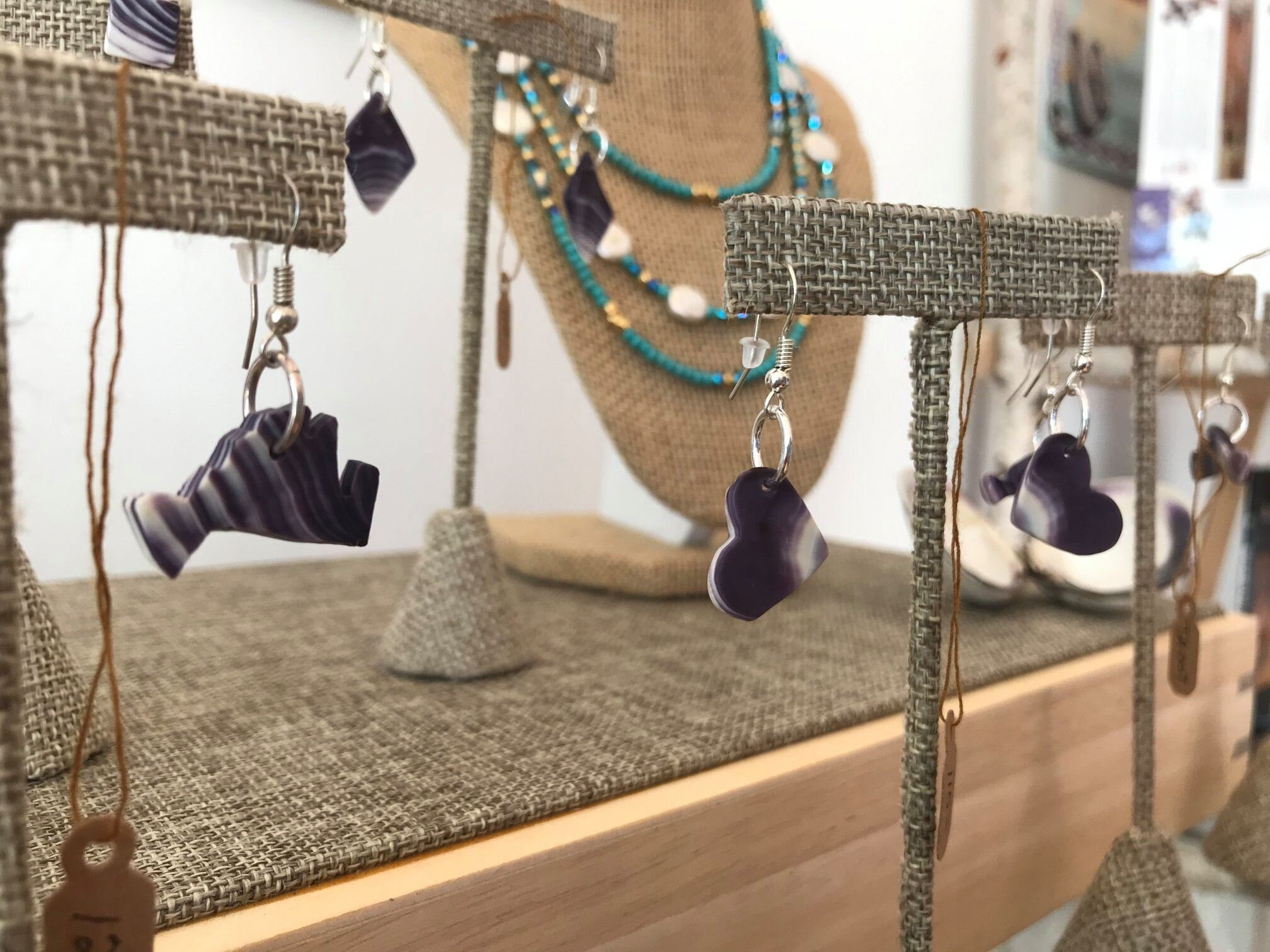
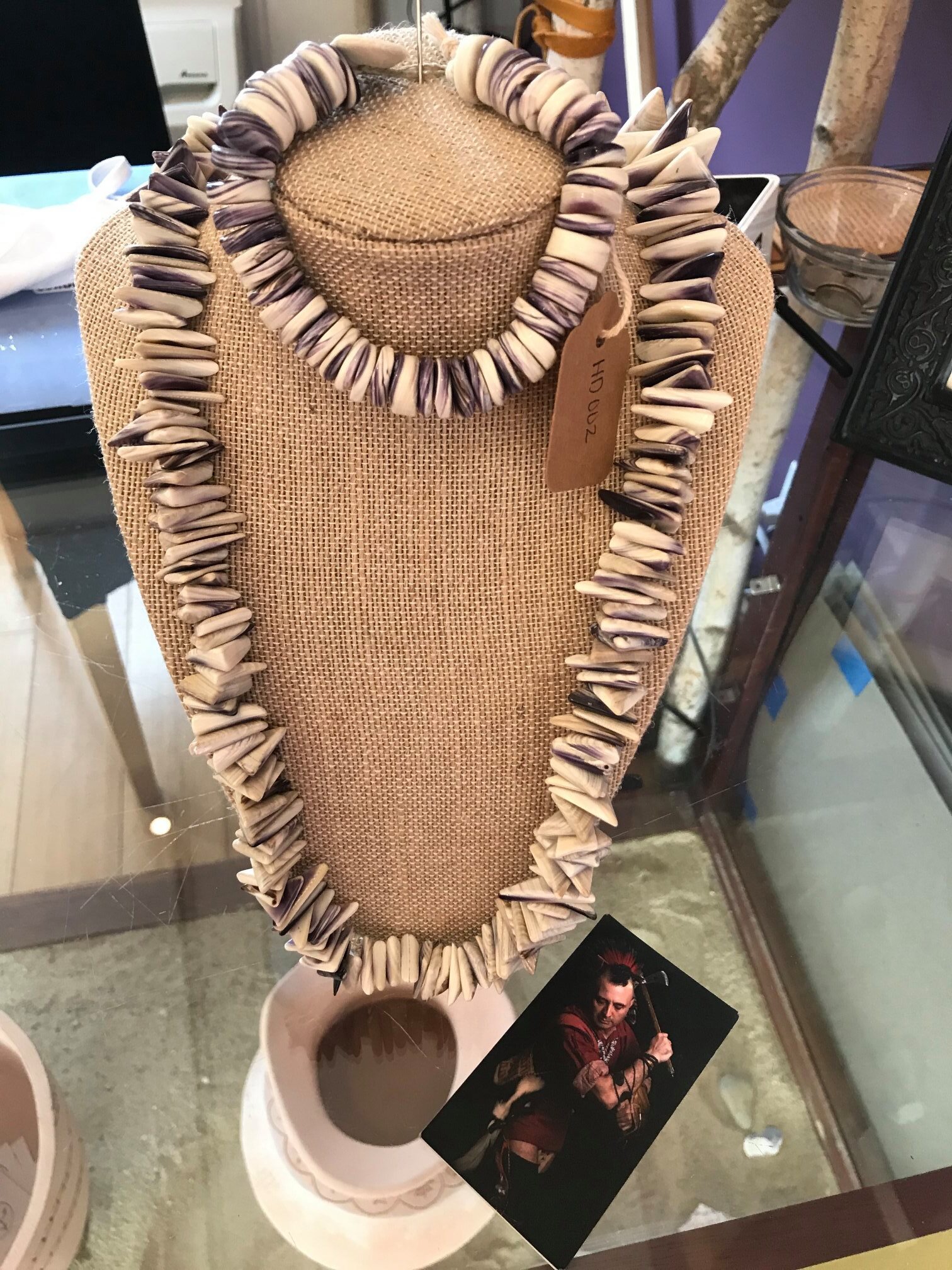
Tribal drumming and dancing in Mashpee Commons on Friday, July 10, marked the opening of the Wampanoag Trading Post, an art gallery selling works by members of the Mashpee Wampanoag Tribe and other native artisans.
Wedged between Unique Boutique and Sea Bags on North Street, the gallery curated and operated by two women of the Mashpee tribe, Danielle Hill and Paula Peters, brings Mashpee’s cultural roots to a storefront in the town’s commercial plaza.
“We’re really hopeful that people who come in will not only see something they want to buy but will also learn more about Wampanoag heritage,” Ms. Peters said.
Inside the shop, wares—including pottery, handwoven basketry, paintings, jewelry and books—are displayed alongside educational material such as a Plymouth 400 exhibit which recalls the history of colonial and native interactions in the Massachusetts Bay area circa 1620.
Much of the craftsmanship on display has been passed down through generations since time immemorial and continues to draw upon the natural resources present in the ancestral homelands of the Wampanoag people.
“That’s how most of us know our skill, just watching our family members weave or make jewelry,” Ms. Hill said. “Resourceful thinking—that is part of our art.”
Among the traditional artistry for sale at the Wampanoag Trading Post is wampum jewelry, which is made with beads constructed from the lustrous blues, purples and whites of quahog and clam shells.
“As turquoise is to the Southwest, wampum is to the Northeast,” Ms. Peters said.
The business venture by the two women had long been in the works but came to fruition in short order due to the circumstances of the COVID-19 pandemic, which Ms. Peters said canceled travel plans she had for her work with the Plymouth 400 committee.
Prior to the opening of the Wampanoag Trading Post, “I never really felt part of this place,” Ms. Peters said of Mashpee Commons. She praised the Commons for its willingness to allow the business to “infuse Mashpee Commons with Wampanoag heritage.”
“Our presence not being here was not acceptable,” Ms. Hill said. She described having a tribal representation in the Commons as “long overdue” and acknowledged that the Commons was excited when the two tribal members proposed the shop.
Ms. Peters noted that many tribes throughout the United States—including some whose works are for sale at the Wampanoag Trading Post—have similar art galleries and shops in their communities.
Amidst the pandemic, which canceled the tribe’s annual Pow Wow, the Wampanoag Trading Post provides an alternative venue for tribal artisans to sell their work, Ms. Peters said.
About 20 Native American artists have their works for sale at the shop, she said.
In addition to works by Mashpee Wampanoag artists, there are works by artists from tribes across the United States, including the Aquinnah Wampanoag Tribe of Martha’s Vineyard and the Seminole Tribe based in Oklahoma.
“That’s something we want the public to know,” Ms. Hill said. "The majority of tribal members are artisans.”
She said the Wampanoag Trading Post plans to host talks and presentations by Native American artists to inspire a deeper respect for the craftsmanship, history and culture intertwined with each work.
“We want to educate the public on who we are as well as our arts,” she said.
By Ryan Spencer | Mashpee Enterprise
